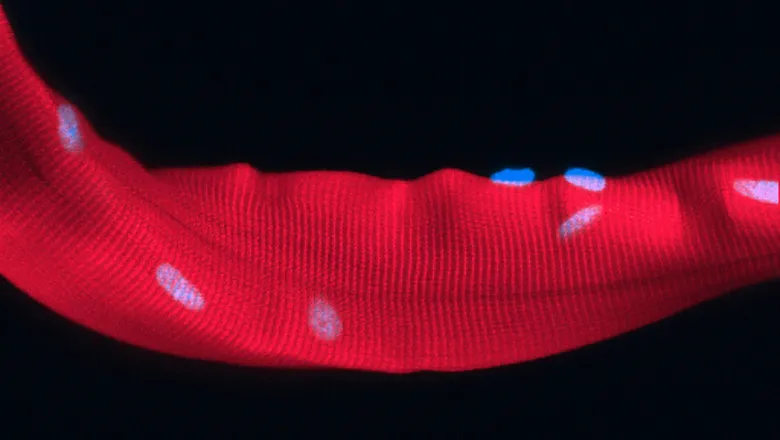Our study reveals that the protein Myogenin maintains stem cells asleep in normal circumstances but also promotes their ability to grow or heal the muscle when needed. This discovery provides insight into how muscle size is maintained across the life course and marks an important step in understanding how healthy muscle works.
Dr Massimo Ganassi, School of Basic & Medical Biosciences
27 January 2021
Research provides insight into the regulation of muscle fibres
The discovery marks an important step in understanding how healthy muscle works and may help identify the causes of its decline in ageing and disease.

Our muscles are made of fibres, elongated contractile giant single cells with multiple nuclei, that can grow and regenerate following injury, thanks to resident stem cells. These cells are dormant, but awaken upon need, and serve as a repair system for the muscle. However, in normal ageing and disease, muscle mass and strength decline, which reflects a failure of this muscle homeostatic maintenance.
In a recent study, Dr Massimo Ganassi and Professor Simon Hughes, from the School of Basic & Medical Biosciences, study how this balance is controlled, by examining muscle formation and maintenance in zebrafish that lack Myogenin – a protein involved in this homeostasis. By isolating muscle fibres and their associated stem cells from fish fillets, researchers found that the fibres lacking Myogenin were smaller in size but bear more stem cells than those from normal zebrafish.
Myogenin is required for muscle stem cells to go fully quiescent, and to take up their correct location near to the ends of the muscle fibres. When called upon to activate, stem cells in animals lacking Myogenin activate faster, but cannot fuse to regenerate large multinucleate fibres. The small fibres that lack Myogenin have very few nuclei but, nevertheless, grow larger per nucleus than normal fibres.
Understanding such normal mechanisms may help to identify the causes of muscle decline in ageing and disease. However, prior to translation into the development of tailored treatments for people, exactly how, when and where Myogenin works to regulate muscle stem cells and fibre growth in humans should be investigated.

